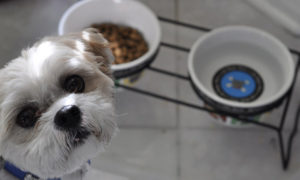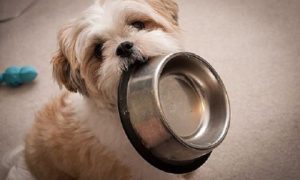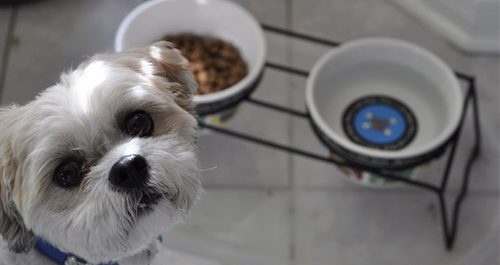
A balanced and correct Shih Tzu diet will result in a healthy, active pet with a long, lovely, and shiny coat. Also, the proper Shih Tzu diet will make it easier for your dog to maintain a healthy and ideal weight, along with adequate exercise opportunities.
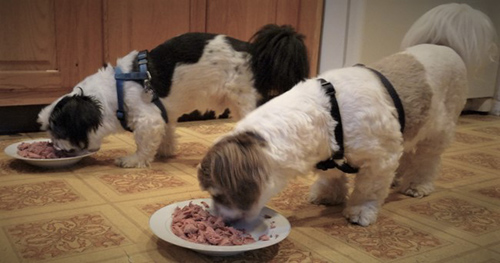
However, a Shih Tzu diet that is unhealthy and unbalanced will result in a dry, brittle coat, low energy; general poor health; inadequate growth, and potentially bone and muscle growth defects.
All owners need to understand the basics of a good Shih Tzu diet and how to read and understand dog food labels, which will go a long way in helping to get the right nutritional balance for your canine family member. Feeding a Shih Tzu is nothing like providing for a human. Too many Shih Tzu owners believe that their dogs need various types and tastes of food in their diet, like what people enjoy.
No matter how beautiful, regal, and intelligent your Shih Tzu is, the reality is that dogs enjoy and are very satisfied eating the same type of food daily. Making changes to their food can be harmful. Another misconception when it comes to feeding is that this breed is a strict meat eater. Dogs are more like omnivores; they can eat both vegetables and meat and other organic items. For instance, a Shih Tzu vegetarian diet is recommended by some experts.
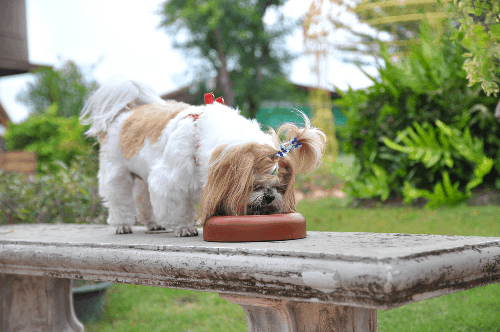
Nearly All of the vitamins and minerals needed for your dog to be healthy can be found in vegetables and grains. Unfortunately, some dog foods on the market contain little to no nutritional value and are most likely loaded with fillers. Thankfully, they do not harm your pet. However, it can result in bloating, excess waste material, and allergies.
These high filler foods cause constipation, diarrhea, excessive gas, and other gastrointestinal issues. Finding the right Shih Tzu diet for your dog will take some research as well as some trial and error. You can find out more about this issue by talking to veterinarians, breeders, and dog trainers. These people can provide you with a treasure trove of information about what type of foods you should be feeding your beloved Shih Tzu.
However, if the recommended food does not agree with your dog or she refuses to eat for more than three days, it is time to consult your veterinarian once again and consider changing to a different type of food.
Shih Tzu Diet: Changing Foods
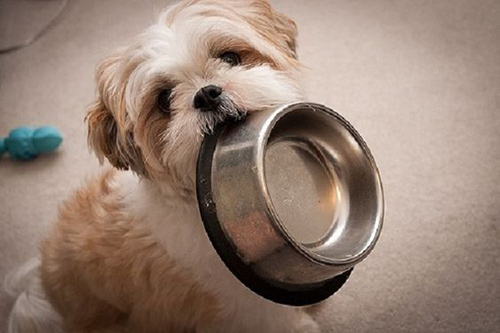
If your Shih Tzu is currently on a particular brand of dog food and you would like to change to another, there are ways to accomplish this feat without upsetting your dog’s stomach and the possibility that she would refuse to eat the new brand of dog food. The idea is to limit portions of the new food with the old until your dog is entirely on the new brand.
Follow these steps to change your Shih Tzu from one brand to the next:
- Measure the entire portion of the original food and then remove approximately 1/5th to ¼ of the amount and replace it with the new food.
- Place the new food in front of your Shih Tzu and give her 15 to 20 minutes to finish the meal. Take the food away even if she did not complete it. However, some are picky eaters and may refuse to eat altogether. In this case, do not scold or punish her or attempt to convince her to eat by adding something else to the dish, such as milk, gravy, or other enticing treats.
- Do not give your Shih Tzu any other treats until your dog’s next scheduled mealtime. Subsequently, most owners feed their dogs two times per day. Therefore, mealtime should be 12 hours between feedings. Continue the process by putting a new, fresh bowl of 4/5 to 1/5 or ¾ to ¼ food out for your dog. No matter how picky your dog is, she should eat at least some of the mixture. However, if they do not eat, repeat steps two and three, but add different and reasonable exercise levels.
- Continue feeding the mixture to your Shih Tzu for a week until she eats the required amount within the 15–20-minute feeding period mentioned earlier.
- The following week, you can up the mixture to ½ by combining ½ original along with new Shih Tzu food recipes. By now, your dog should have already accepted the new food, all while avoiding any new Shih Tzu eating problems. Continue this feeding mixture for 5-7 days to let the dog’s digestive system adjust.
- After three weeks, combine ¼ original to ¾ new Shih Tzu food recipes while following the same pattern.
- Hopefully, after three weeks, your dog’s new Shih Tzu diet should be set.
Although this transition is prolonged, it will prevent many of the usual complications of constipation, diarrhea, and vomiting associated with a drastic and abrupt change in diet. Keeping your Shih Tzu on the same foods for five to seven days in between increases will ensure that your dog will have no idea that a switch was made.
If your dog is an extremely picky eater, you may need to give more than one feeding before they begin to eat the mixture the first time. At this time, owners need to be stingy when it comes to snacks, treats, and other food items their dogs love, which will encourage them to eat the right food. Shih Tzus used to only eating human food and snacks will be hard to convince because they are not accustomed to eating only dog food. Contact your vet immediately if you find that the process takes longer than it should and your dog refuses to eat.



